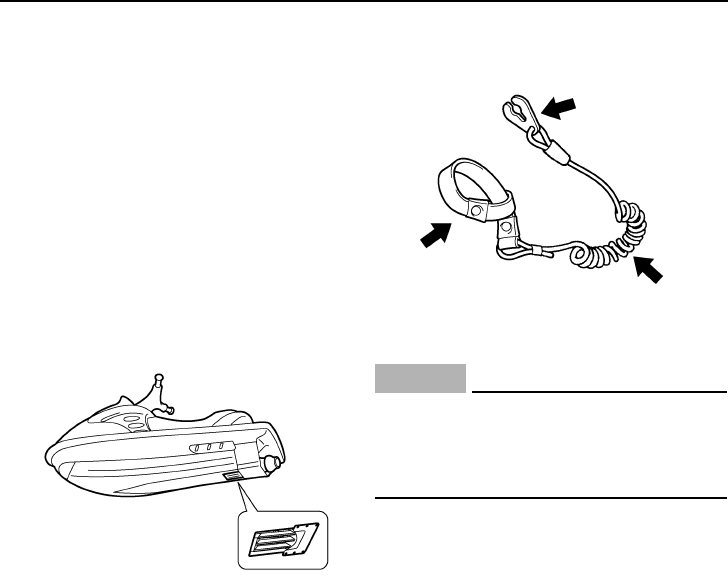
Operation
56
EJU32651
Jet intake
Carefully check the jet intake for weeds, de-
bris, or anything else that might restrict the in-
take of water. If the jet intake is clogged, clean
it. (See page 88 for jet intake cleaning proce-
dures.)
If the watercraft is operated while the jet in-
take is clogged, cavitation could occur, reduc-
ing jet thrust, and possibly damaging the jet
pump. In some cases, the engine may over-
heat because of lack of cooling water, and
damage to the engine could result. Cooling
water is fed to the engine by the jet pump.
EJU32661
Engine shut-off cord (lanyard)
Check that the engine shut-off cord (lanyard)
is not frayed or broken. If the cord is dam-
aged, replace it. WARNING! Never try to re-
pair the engine shut-off cord (lanyard) or
tie it together. The engine shut-off cord
(lanyard) may not pull free when the oper-
ator falls off, allowing the watercraft to
continue to run and cause an accident.
[EWJ01220]
EJU32671
Switches
NOTICE
ECJ00410
Do not run the engine for more than 15
seconds when checking the switches on
land without supplying water, otherwise
the engine could overheat.
Check the start switch, the engine stop
switch, and the engine shut-off switch for
proper operation.
Push the start switch to start the engine. As
soon as the engine starts running, push the
engine stop switch to verify that the engine
stops immediately. Restart the engine, and
then pull the engine shut-off cord (lanyard) to
remove the clip from the engine shut-off
switch to verify that the engine stops immedi-
ately. (See pages 31 to 31 for information on
proper operation of the start switch, the en-
UF2R10E0.book Page 56 Friday, October 31, 2008 9:14 AM


















